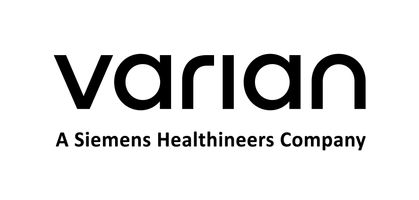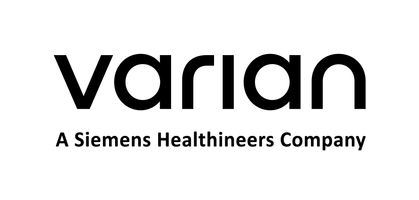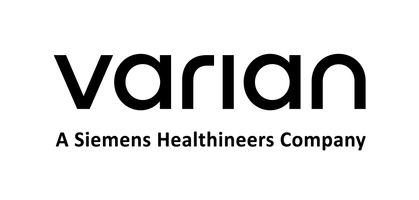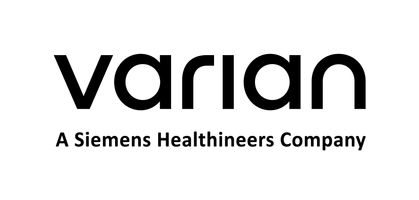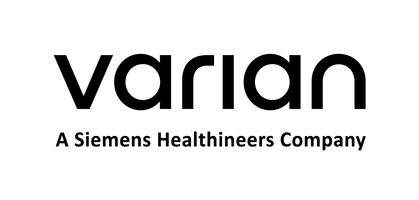Title Page
-
Name of audited location
-
Conducted on
-
Prepared by
-
Address of audited location
-
Auditee and their designation
-
Equipment inspected
-
Audit observer(s) and their designation
-
Work activity assessment for audit purposes
-
Documentation
-
Audit document number for reference
Inspection Page 1/3
1) Emergency Evacuation & Preparedness
-
1.1-Aisles, passageways, and exit doors are free from obstruction?
-
1.2-Corridors/passageways are at least 1.2 m wide?
-
1.3-First aid kit in a well-lit and accessible location?
-
1.3.1-Record expiry date of first aid kits [Add note for additional first aid kits]
-
1.3.2-List of first aiders clearly marked at a visible location?
-
1.3.3-First aid kit inventory checked regularly?
-
1.3.4-First aid kit is well stocked?
-
1.4.1-Record expiry date of first aid kits (yyyymmdd) [Add note for additional first aid kits]
-
1.4.2-List of first aiders clearly marked at a visible location?
-
1.4.3-First aid kit inventory checked regularly?
-
1.4.4-First aid kit is well stocked?
-
1.4-Customer safety signs such as emergency evacuation map/emergency exits/hazard communication/emergency contacts are present and clearly visible to staff?
-
Comments/Notes/Findings not captured in checklist for Emergency Evacuation & Preparedness
2) General Workplace Safety and Health
-
2.1-Customer staff (supervisor, health physicist, doctor etc.) is present during inspection?
-
2.2-The workplace is not overcrowded or cramped?
-
2.3-Toilets/restrooms are clean, sufficient, well-ventilated with good lighting?
-
2.4-The environmental conditions at the workplace is suitable and adequate with regards to temperature, light, humidity, noise, ventilation, dust, vibration, etc.
-
2.5-Staff do not display prohibited practices (smoking, alcohol consumption, apply cosmetics, etc.)?
-
2.6-The workplace displays good housekeeping practice to minimize slip, trip, fall, fire hazards?
-
2.7-Are shelves/racks used at the workplace?
-
2.7.1-Shelves/racks display the safe working load (SWL)?
-
2.7.2-Shelves/racks are sturdy (not wobbly)?
-
2.7.3-Shelves/racks have good structural integrity (no sunken platform/rusting/missing parts)?
-
2.8-Gas cylinders are safely secured to a fixed object and restrained?
-
2.8.1-Gas detectors are installed?
-
2.8.2-Gas detectors are up-to-date on calibration/servicing/maintenance?
-
2.8.3-Are the labels on the cylinders legible?
-
2.8.4-Unused cylinders have valve protection cap securely in place?
-
2.8.5-Safety datasheets for gas cylinders are accessible?
-
2.8.6-Gas regulators show no signs of visible damage/deformity?
-
2.9-Only compatible works are carried out?
-
2.10-Staff (record name in notes) can briefly describe what is incompatible work?
-
2.11-Are non-Work-At-Height PPE (eyewear, ear plugs, masks, helmets, footwear, clothing, gloves, etc.) available for staff to use?
-
2.12-List of PPE available?
-
2.13-Are auditees wearing the correct PPE during the audit?
-
Comments/Notes/Findings not captured in checklist for General Workplace Safety and Health
Inspection Page 2/3
3) Electrical Safety
-
3.1-Electrical safety signs are visible at appropriate locations?
-
3.2-Cables are not damaged (frayed/worn/exposed wiring/cut/etc.)?
-
3.3-Electrical connections (breakers/switches/plugs/etc.) are not damaged (burn marks/exposed wiring/holes/rust/etc.)?
-
3.4-Electrical connections are not likely to come in contact with water or other liquids?
-
3.5-Cables and connections show no sign of unsafe modifications?
-
3.6-Extension cords are not daisy-chained?
-
3.7-Plugs in use have safety logo?
-
Comments/Notes/Findings not captured in checklist for Electrical Safety
4) Fire Safety
-
4.1-Fire extinguishers are inspected, not expired, in visibly good working condition and unobstructed?
-
4.2-Fire hose reels are inspected, not expired, in visibly good working condition and unobstructed?
-
4.3-Fire detection system (smoke/heat/flame) is present?
-
4.3.1-What is the fire detection system used?
-
4.3.2-Does the fire detection system show no visible signs of damage/corrosion?
-
4.4-Fire suppression systems are present?
-
4.4.1-What is the fire suppression system?
-
4.4.2-Does the fire suppression system show no visible signs of damage/corrosion?
-
4.5-Electrical connections are not likely to come in contact with flammable materials?
-
4.6-No stack/pile of combustible or flammable materials?
-
Comments/Notes/Findings not captured in checklist for Fire Safety
5) Chemical Safety
-
5.1-Chemicals are properly labeled according to GHS guidelines?
-
5.2-Chemicals (including waste) are properly stored prior to disposal?
-
5.3-Chemical spill kit present?
-
5.4-Staff are able to briefly explain how to properly use the chemical spill kit?
-
Comments/Notes/Findings not captured in checklist for Chemical Safety
Inspection Page 3/3
6) Work-at-Height (WAH) Safety
-
6.1-There are no open sides from which a person could fall from?
-
6.2-There are no openings on the floor from which a person could fall into?
-
6.3-Guard rails are at least 1 m in height?
-
6.3.1-If guard rails are not at least 1 m in height, what are the additional risk controls adopted?
-
6.4-Gaps in the guard rail are 60 cm or less?
-
6.5-Is/are the field engineers(s) aware to inspect WAH PPE before each use?
-
6.5.1-Could staff briefly describe how to inspect WAH PPE before use in a satisfactory manner?
-
6.6-There are no fragile surfaces from which a person could fall from?
-
6.6.1-Are the fragile surfaces marked and barricaded?
-
6.7-Ladders show no visible damage/deformity?
-
6.8-Take photos of ladders with attached safety standard label
-
6.9-Are staff aware of the need to inspect the ladder before use?
-
6.10-Scaffolds and their components are regularly inspected by competent person?
-
6.11-Scaffolds show no sign of visible damage/deformity?
-
6.12-Are staff aware of the need to inspect the scaffold before use?
-
6.13-Two horizontal and parallel guardrails on each side are in place and properly installed?
-
6.14-The scaffolds platforms have toe-boards on all sides?
-
6.15-Does the scaffold come with a user manual supplied by the manufacturer?
-
6.16-Was the scaffold built to a recognized safety standard?
-
6.17-Sample several WAH PPE. Do these show no visible signs of damage/deformity?
-
6.18-Sample several WAH PPE. Are these current and not past expiry date?
-
6.19-Are the WAH PPE properly stored and easily accessible?
-
Comments/Notes/Findings not captured in checklist for WAH Safety
7) Lifting Equipment Safety (e.g. crane/hoist/pulleys/rope/etc.)
-
7.1-Lifting tools/equipment show no signs of visible damage/deformity?
-
7.2-Lifting tools/equipment are regularly inspected by a competent person?
-
7.3-Are staff aware of the need to inspect the lifting equipment/tool before use?
-
Comments/Notes/Findings not captured in checklist for Lifting Equipment Safety
8) Lockout and Tagout (LOTO)
-
8.1-Lockout devices have no visible damage/deformity?
-
8.2-Tags are legible, robust, and and understandable by all staff who may be in the area?
-
Comments/Notes/Findings not captured in checklist for LOTO Safety
9) Inspection on Other Equipment and Hand Tools
-
9.1-Sample several hand tools. Tools show no visible signs of damage/deformity?
-
9.2-Where applicable, safety labels/signs are clear and affixed to the equipment?
-
9.3-Patient treatment room/couch is clean and free from any potential biological hazards?
-
9.4-Hand tools are stored safely in an organized manner?
-
Comments/Notes/Findings not captured in checklist for Equipment and Hand Tools Inspection
10) Waste Management (excludes chemical, radioactive waste)
-
10.1-Is there an agreement with the Customer for waste management (parts for scrapping, e-waste, etc.)?
-
10.2-Is the waste properly segregated and stored prior to disposal?
-
Comments/Notes/Findings not captured in checklist for Waste Management
B) Document Review
1) Emergency Evacuation & Preparedness
-
1.1-Varian staff received EHS instruction/training/communication from customer?
-
1.2-First aider keeps a record of treatments?
-
Comments/Notes/Findings not captured above
2) General Workplace Safety and Health
-
2.1-Staff has access to updated EHS documents (procedures/risk assessments, etc.)?
-
2.2-Staff has access to the latest work procedures ?
-
2.3-How many courses in the training matrix have been completed?
-
2.4-Is there an appointed safety officer/lead to oversee daily EHS activities at the workplace?
-
2.5-Do staff perform work using electric or gas welding machines?
-
2.5.1-Please provide evidence of relevant training.
-
2.6-Do staff operate forklifts?
-
2.6.1-Please provide evidence of relevant training.
-
2.7-Staff has undergone medical examinations as a requirement to perform work?
-
2.7.1-Please provide evidence of medical examinations.
-
2.8-Site employees know to report incidents, near misses, and good observations to EHS and to the Site Manager?
-
2.9-The site performs the monthly safety audit?
-
2.9.1-Document evidence of completed monthly safety audits.
-
2.9.2-Document evidence that a process is in place to correct discrepancies found in the monthly safety audit
-
Comments/Notes/Findings not captured above for General Workplace Safety and Health
3) Electrical Safety
-
3.1-Staff have completed Electrical Safety training on LMS?
-
3.2-Provide evidence of other electrical safety training, if applicable.
-
Comments/Notes/Findings not captured above for Electrical Safety
4) Fire Safety
-
4.1-Provide evidence of fire safety training, if applicable
-
4.2-Is there a list of appointed fire wardens?
-
4.3-Provide evidence of fire warden training
-
Comments/Notes/Findings not captured above for Fire Safety
5) Chemical Safety
-
5.1-Safety data sheets (SDS), either in paper or softcopy, are accessible?
-
5.2-Provide evidence of chemical safety training, if applicable
-
5.3-Inventory of hazardous chemicals maintained and accessible on-site?
-
Comments/Notes/Findings not captured above for Chemical Safety
6) Work-at-Height (WAH) Safety
-
6.1-Staff performing WAH activities have the required license/training?
-
6.2-Staff managing WAH activities have the required license/training?
-
6.3-Is a list of WAH PPE assigned to staff available?
-
6.4-WAH PPE are under a regular maintenance/inspection program?
-
6.5-Are there safe means of entry and exit for WAH work activities?
-
6.6-Varian staff using ladders at work completed EHS Ladder Safety training on LMS?
-
6.7-Staff who move, operate, and inspect the scaffold are trained to recognize the hazards associated with it?
-
6.8-Staff have completed the Fall Protection training on LMS?
-
Comments/Notes/Findings not captured above for Work-at-Height Safety
7) Lifting Equipment Safety (e.g. crane/hoist/pulleys/rope/etc.)
-
7.1-Is there a list of lifting tools/equipment used by staff?
-
7.2-Staff have completed Overhead and Gantry Crane Safety Awareness training on LMS?
-
7.3-Lifting equipment/tools have valid Lifting Machine (LM) certificate?
-
7.4-Is there an established and implemented Lifting Plan?
-
7.4.1-Is the Lifting Plan made available for inspection upon request by an inspector?
-
7.5-Staff operating the overhead travelling crane has completed relevant training course?
-
7.6-Staff supervising crane lifting operations has completed relevant training course?
-
7.7-Staff performing rigging and/or signaling has completed relevant training course?
-
Comments/Notes/Findings not captured above for Lifting Equipment Safety
8) Lockout and Tagout (LOTO)
-
8.1-Staff have completed Lockout-Tagout training on LMS?
-
8.2-Staff could briefly describe the LOTO procedures in a satisfactory manner?
-
Comments/Notes/Findings not captured above for Lockout and Tagout (LOTO)
9) Lone Worker
-
9.1-Has the Site Manager identified the areas and tasks at the site where the Lone Worker Rule applies?
-
9.2-Were the site employees trained on the Lone Worker Rule before work began?
C) Structured Interview (choose several safety topics and staff for interview)
1) Work-at-Height (WAH) Safety
-
1.1-Name of interviewee and designation
-
1.2-Date of interview
-
1.3-Start time of interview
-
1.4-Staff could briefly describe the procedures to follow when working at the top of the gantry with the crane as the anchor point?
-
1.5-Staff could briefly describe the emergency procedures for WAH activities?
-
1.6-End time of interview
-
Comments/Notes/Findings not captured above for Work-at-Height (WAH) Safety
2) Electrical Safety
-
2.1-Name of interviewee and designation
-
2.2-Date of interview
-
2.3-Start time of interview
-
2.4-Staff could briefly describe the observer rule for work on exposed energized circuits of 50 V or greater?
-
Comments/Notes/Findings not captured above for Electrical Safety
3) Lockout and Tagout (LOTO)
-
3.1-Name of interviewee and designation
-
3.2-Date of interview
-
3.3-Start time of interview
-
3.4-Staff could briefly describe how to communicate during LOTO work when out of line of sight?
-
Comments/Notes/Findings not captured above for Lockout and Tagout (LOTO)
4) Work-at-Height (WAH) Safety Harness Demonstration
-
4.1-Name of interviewee and designation
-
4.2-Date of interview
-
4.3-Start time of interview
-
4.4-Staff could demonstrate putting on a safety harness correctly and adjusting to ensure good fit?
-
Comments/Notes/Findings not captures above for WAH Safety Harness Demonstration
D) Work Activity Assessment
-
1.1-Staff and designation
-
1.2-Date of assessment
-
1.3-Start time of assessment
1.4-Choose one of the following work activities for assessment.
-
1.4.1-Observe in real-time how the EHS monthly inspection is done by the site team using the provided checklist.
-
1.4.2-Mock demonstration of emergency rescue of fallen colleague hanging from a harness.
-
1.4.3-For specific work activity based on Varian maintenance and service documents, click Yes, and provide details in Question 1.5.
-
1.5-Description of work activity
-
1.5.1-Observed uncontrolled risks?
- General Safety and Health
- Electrical
- Fire
- Work-at-Height (WAH)
- Chemical
- Lockout-Tagout (LOTO)
- Radiation
- Lifting Equipment
- None observed
-
1.5.2-What are the uncontrolled risks?
-
Comments/Notes/Findings not captured above for Work Activity Assessment
E) Conclusion
-
1.1-Summary of audit findings
-
1.2-Summary of audit actions
-
1.3-Conclusion
F) Signatures and Acknowledgement
-
1.1-Auditor name and signature
-
1.2-Auditee name and signature
-
1.3-Auditee name and signature
-
1.4-Auditee name and signature
-
1.5-Auditee name and signature
-
1.6-Auditee name and signature
-
1.7-Auditee name and signature
-
1.8-Audit observers
-
1.9-Audit end date
-
1.10 Audit end time






